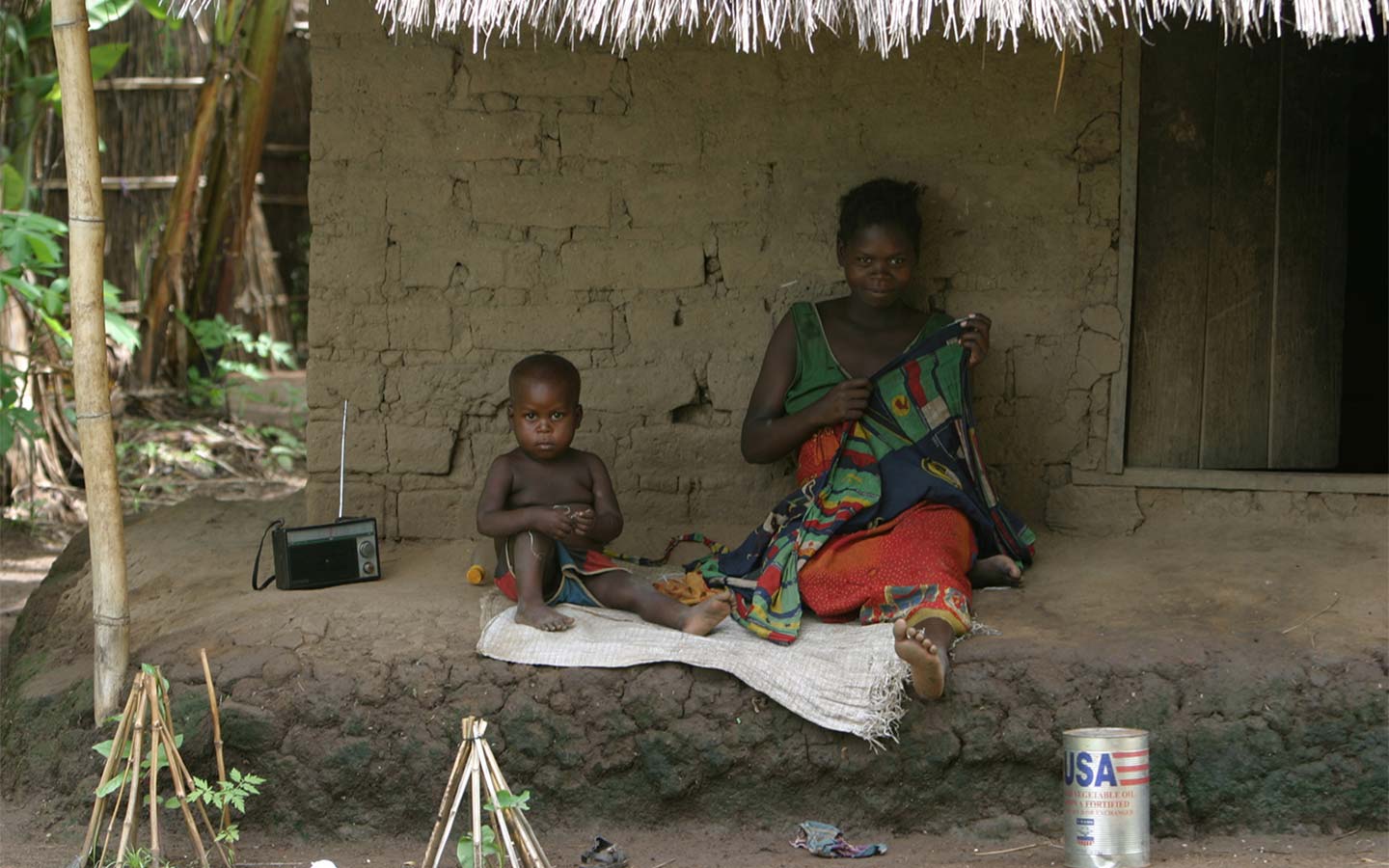While today’s radio landscape is overwhelmingly regional, local or hyper-local, AWR’s coverage is global, with local studios and radio stations worldwide.
AWR’s worldwide operation started modestly in 1970 with a single hour-long shortwave broadcast from Portugal, which was then massively boosted in 1985 with the purchase of land on the island of Guam, where the ministry installed a series of transmitters and antennas.
In the early 2000s, the need arose to modernize the transmitters and physical infrastructure to improve the reliability of transmissions from this site. As a result, five 100 kW shortwave transmitters and an automation system that controls audio sources to each transmitter and antenna are still in use today and provide coverage to parts of Asia and the Middle East.
In addition to the Guam site, AWR leases airtime from several shortwave broadcasters to cover the billions of people in the 10/40 window. The 10/40 window—a geographic area between latitude north 10 and 40 that stretches from North Africa through the Middle East to Asia—covers 68 countries. Billions in this “window” have not heard the message of salvation due to government or cultural restrictions.
Today, in addition to shortwave transmissions, AWR also embraces FM radio through affiliate stations and like-minded broadcasters using material produced by more than 100 studios in 80+ languages. But it doesn’t stop there. The ministry has also added podcasts to its programming library, spreading the Good News even further.
Sunspots!
Broadcasting in more than 80 languages is already a colossal feat, but on top of that, AWR must vary its schedules according to the sunspot cycle.
At this point, you might be asking yourself, “Sunspots?” Incredibly, yes.
Shortwave radio transmissions can span the world. The signals rely on the ionosphere—a constantly shifting ionized layer above the atmosphere—to bounce and refract the signals back to earth in multiple “hops.” That’s how radio stations can be heard beyond the horizon and ultimately reach across such enormous distances.
But the ionosphere is heavily affected by sunspots and other factors. In practical terms, it means that shortwave broadcasters have to shift their frequencies, transmitting power, beam angles and overall schedules to get the maximum range from this ever-shifting medium every six months.
Covering Three-Quarters of the World
While AWR also uses the internet to make its programming available globally, given that much of the world’s population still lacks a reliable or affordable internet connection, shortwave is still a viable medium, with cheap, effective shortwave radios almost universally available.
AWR’s transmissions, which can be heard by three-quarters of the world’s population, are also immune from the kind of government firewalls that can prevent entire populations from experiencing content from outside their own countries.
The complexity of AWR’s output is mind-boggling. With programming in scores of languages, it’s a massive logistical and technical challenge. As a globe-spanning ministry that speaks daily to audiences across entire countries as well as smaller linguistic communities, the amount of content produced—which also needs timely delivery—is enormous.
Media Asset Management
With so many factors that need to work in perfect harmony, AWR wanted to use a computer system that could expand and adapt to new technologies while seamlessly providing content at the right time with the right language.
In 2012, AWR opted for a basic Media Asset Management (MAM) system to manage its podcasting. The MAM was in charge of collecting the audio from production studios and distributing them to podcast platforms such as iTunes. From the beginning, it was clear this would be a mammoth operation. The MAM helped, but as the years went by, support and maintenance for the system proved difficult and new features and updates were hard to implement.
The ministry also had no automated means to distribute audio files to multiple broadcasters in a timely manner, and that quickly became AWR’s biggest growing requirement. Nor could the team manage quality control checks (length, volume, quality, etc.) through the MAM system. This part of the process had to be done manually every day for more than 70 audio files.
It Was Time for a Change
In 2018, AWR started looking around for a new system that would not only distribute the files but verify them to ensure that they were “valid” for delivery, while also improving productivity.
Ultimately, AWR found a system called “Dalet Galaxy,” which AWR adapted to meet its unique workflows. A typical program goes from production to distribution like this:
- Global Studio Production
First, a studio somewhere—anywhere—in the world makes a file with broadcast or podcast content according to AWR’s technical specifications. For example, if it’s for broadcast, it will be either half an hour or an hour long, or it can be any length if it’s a podcast.
- Centralizing Assets With Key Metadata
From here, the files are sent to the MAM with high-quality and accurate metadata (title, description, keywords) included.
Before this process was in place, podcast files would often be published to the internet with no title and/or summary. The listener would have no idea what the program was about. This new system ensures high-quality program information so even more people can find the types of content they’re looking for.
- Eliminating File Errors
At this point, the file goes through a number of verifications to ensure the file name, length and other features meet AWR’s quality standards. If not, an email and text message are sent to the studio so it can be corrected locally. Since this is an automated process, it ensures that problems get fixed much more quickly.
Once everything looks good, the files are delivered to the stations that will be airing the programs. These are usually sent at least 72 hours before airtime to give them ample time to schedule the program. In a pinch, though, the automation and quality control processes are so efficient that replacement files can be received just minutes before a broadcast.
- Automation Keeps the Operation Flowing and Informed
The MAM continues to monitor the status of all file deliveries and emails the platform administrator if an error is found. It will also alert studio technicians if an expected broadcast and/or podcast file has not arrived for its scheduled distribution.
When the team at Dalet began working with AWR, they commented on the fact that AWR has “one of the industry’s most advanced radio workflows.” This incredible setup, the work of skilled technicians, and the Lord’s blessing are what enable AWR to share the Good News with so much of the world.
“This ministry has undergone a big shift over the years,” said AWR President Duane McKey. “As technology has changed, AWR has adjusted with distribution methods that better address the different regions we cover. We are now publishing to podcast platforms, cell phones, and social media channels, as well as producing videos that can be found on YouTube. We believe we need to share the life-transforming message of Jesus Christ with all the world via all media platforms.”
While talking about technology like this can sometimes feel very technical, its benefits are clear: The fewer glitches that happen during a major process like this, the faster AWR’s programs will blanket the world with Bible-based messages. And ultimately, it means that even more people worldwide will hear the Good News and enter into a relationship with Jesus. Thank you for your support of AWR. It is making a measurable, heart-changing difference on a daily basis.
By Sammy Gregory


